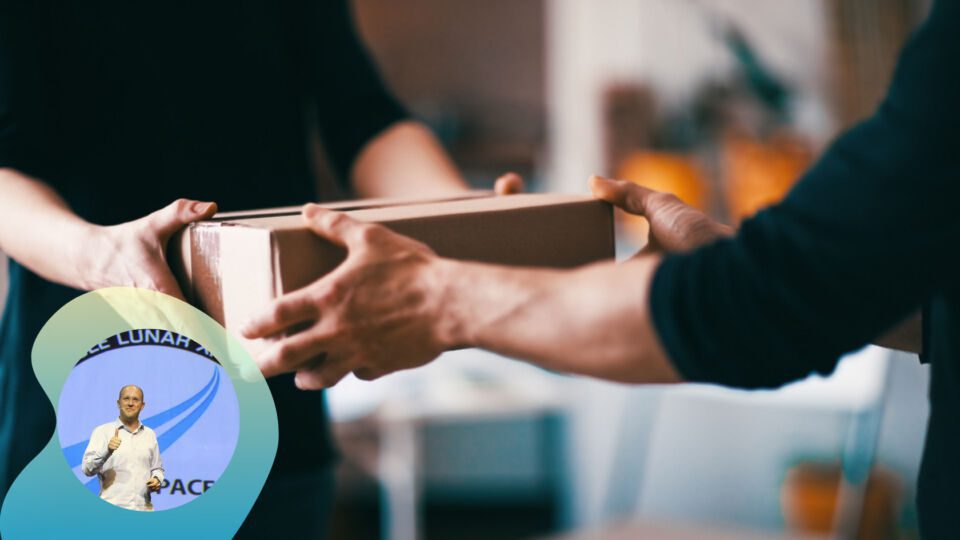Even before the COVID-19 pandemic dramatically accelerated the growth of ecommerce and raised consumer expectations for seamless, almost instantaneous fulfillment, on-demand deliveries were already becoming the norm across the globe.
Fueled by the rapid shift to online channels and the desire to meet digitally savvy consumers’ expectations for instant gratification, the on-demand food delivery market is surging. In the U.S. alone, forecasters project that the on-demand food delivery market will nearly double, from $18.5 billion in 2020 to $33.7 billion in 2026.
As services like DoorDash and UberEats become more ubiquitous, retailers are embracing on-demand delivery services as a way to delight and keep more customers in today’s hybrid omnichannel world. At first glance, it seems like a win-win: Customers get what they want — faster deliveries and more delivery options — while restaurants and other retailers gain access to a wider pool of potential customers and are better able to retain them.
The Tradeoff
But there’s a problem: While leaning into on-demand deliveries may be essential to attracting and keeping today’s generation of consumers, doing so often comes at the expense of businesses’ bottom lines. The steep delivery fees many services charge mean that restaurants and other retailers are actually losing money on many orders. And passing on those costs to customers can backfire. After all, who in today’s day and age really wants to pay for delivery?
Advertisement
When customers are asked to pay extra for their on-demand deliveries, they often take their business elsewhere. Rideshare companies may offer an illuminating case study here: As these companies have increased their prices in recent months, many customers of services like Uber and Lyft have instead opted to start taking taxis again. Do food retailers seeking to pass on delivery fees to unwitting consumers face the same fate? And if that is the case, must they face the tradeoff between losing customers or losing profit?
Not necessarily. While traditional delivery methods leave retailers vulnerable to the on-demand tradeoff, automated drone deliveries present a viable path to both satisfied customers and a better bottom line.
Taking On-Demand to New Heights
If drone deliveries were on the rise before the pandemic, they have truly taken flight since COVID-19, with major companies launching or expanding pilot projects to achieve faster, cheaper and socially distanced deliveries. Keeping costs in check has played a major role in this lift: Automated solutions like drone deliveries support profit by curbing labor costs — for example, one trained system operator can monitor multiple drone delivery orders simultaneously, helping businesses keep costs down and grow profits on each order.
Drone deliveries also meet rising consumer demand for rapid service: Most customers aren’t willing to wait more than 45 minutes for a food order, and more than a third say they don’t have the patience for a wait time longer than 30 minutes.
That demand for almost instantaneous delivery is only set to grow in the coming years, particularly with retail tech startups leveraging dark stores and microfulfillment centers to promise food deliveries within as few as 10 minutes.
Onward and Upward
Customer expectations are ever-evolving. As the pandemic enters a new phase and the world attempts to navigate a new “new normal,” food retailers are looking to position themselves for growth both now and post-pandemic. That entails a rethinking of longstanding assumptions.
Until recently, conventional wisdom had it that customers who wanted efficiency and convenience would be willing to pay for it. But the Uber-Lyft pushback suggests that this may not be the case. Today’s customers see super-fast, on-demand service as the baseline of a quality buying experience, not an expensive luxury. The question then is, how retailers can meet that need without sabotaging their own business models.
Autonomous drone delivery provides a win-win(-win) situation for everyone: customers enjoy convenient, affordable, and swift on-demand delivery to their home; retailers experience lower costs and faster turnaround time; and delivery company staff have a safer work environment.
Yariv Bash is the CEO and Co-founder of on-demand drone delivery company Flytrex — helping spearhead the drone delivery revolution. Flytrex provides a direct-to-consumer autonomous drone delivery service that lets retailers and quick-service restaurants (QSRs) cater to a wider customer base with faster, safer and cheaper on-demand deliveries. Prior to Flytrex, Bash was the Founder and CEO of SpaceIL, a $100M Israeli nonprofit organization that attempted to land Beresheet, the first private interplanetary robotic mission, on the Moon.






